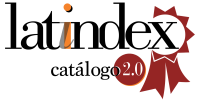A espacialidade, os desafios e as possibilidades da inclusão de meninas da Educação Profissional, Técnica e Tecnológica
DOI:
https://doi.org/10.53455/re.v4i1.96Palavras-chave:
educação inclusiva, meninas, ensino médio integrado, educação para todos.Resumo
Contexto: O artigo apresenta dados e reflexões sobre a espacialidade de meninas no Ensino Médio Integrado à Educação Profissional, Técnica e Tecnológica no campus do Instituto Federal do Paraná (IFPR) no municipio de Umuarama. A pesquisa foi orientada pela perspectiva da educação inclusiva, buscando abordar a educação para todos. A análise abrangeu estudos sobre espacialidade, sexualidade, educação inclusiva, diferença e diversidade, com foco nos temas mais relevantes para a pesquisa. Metodologia: A pesquisa adotou uma abordagem qualitativa, com base em pesquisa bibliográfica e documental. A pesquisa bibliográfica explorou contribuições de autores relacionados aos temas abordados, não com a intenção de esgotar as diferentes perspectivas, mas sim de selecionar os estudos mais pertinentes. A pesquisa documental revelou uma participação positiva das meninas na maioria dos cursos analisados, destacando o papel dos Institutos Federais (IFs) na inclusão das mulheres nas áreas de ciências, tecnologia, engenharia e matemática. No entanto, foi observada uma baixa presença feminina no curso de informática, refletindo a falta de representatividade e os obstáculos histórico-sociais e culturais que desencorajam as mulheres a atuarem na área de tecnologia. Considerações: Para promover a educação para todos e todas, é necessário enfrentar os desafios identificados. Destaca-se o papel fundamental da Educação Inclusiva na busca por soluções que amenizem as barreiras e garantam oportunidades igualitárias para as mulheres na área de tecnologia.
Downloads
Referências
BRASIL. Instituto Brasileiro de Geografia e Estatística. (s.d.). Distribuição percentual da População por Sexo - Brasil - 1980 a 2010. Recuperado de https://brasilemsintese.ibge.gov.br/populacao/distribuicao-da-populacao-por-sexo.html
BRASIL. (1988). Constituição da República Federativa do Brasil. Brasília, DF: Senado Federal: Centro Gráfico.
INSTITUTO NACIONAL DE ESTUDOS E PESQUISAS EDUCACIONAIS ANÍSIO TEIXEIRA - INEP. (2020). CENSO da educação superior 2019. Brasília, DF. Recuperado de https://www.gov.br/inep/pt-br/areas-de-atuacao/pesquisas-estatisticas-e-indicadores/censo-da-educacao-superior/resultados
Conferência Mundial sobre Necessidades Educativas Especiais: Acesso e Qualidade. (1994). Declaração de Salamanca. Recuperado de https://www.educadores.diaadia.pr.gov.br/arquivos/File/conteudo/temas_transversais/declaracao_salamanca.pdf
DIGITAL HOUSE. (2022). Programação: mulheres que fizeram história na área da tecnologia. Recuperado de https://www.digitalhouse.com/br/blog/mulheres-brasileiras-que-fizeram-historia-na-area-da-tecnologia
FERREIRA, E. (2011). Questões de género e orientação sexual em espaço escolar. In M.J. Silva & A.C.P. Silva (Eds.), Espaço, gênero e poder: conectando fronteiras (pp. 201-220). Toda Palavra.
FIGUEIREDO, R.V., Boneti, L.W., & Poulin, J.R. (2017). Da epistemologia clássica da educação à inclusão escolar: desafios e perspectivas. Revista Diálogo Educacional, 17(53), 959-977. DOI: https://doi.org/10.7213/1981-416X.17.053.AO12
FACCO, L. (2011). A escola como questionadora de um currículo homofóbico. In M.J. Silva & A.C.P. Silva (Eds.), Espaço, gênero e poder: conectando fronteiras (pp. 221-242). Toda Palavra.
MANTOAN, M.T.E., & Lanuti, J.E.O. (2022). A escola que queremos para todos. Curitiba: CRV. DOI: https://doi.org/10.24824/978652513032.3
MONTEIRO, R.A. (1998). Pesquisa em Educação: Alguns Desafios da Abordagem Qualitativa. In R. Monteiro (Ed.), Fazendo e Aprendendo Pesquisa Qualitativa em Educação (pp. 15-36). FEME/UFJF.
Organização das Nações Unidas - ONU. (1948). Declaração Universal dos Direitos Humanos. Recuperado de https://www.unicef.org/brazil/declaracao-universal-dos-direitos-humanos
Organização das Nações Unidas - ONU. (1990). Declaração Mundial sobre Educação para Todos. Recuperado de https://www.unicef.org/brazil/declaracao-mundial-sobre-educacao-para-todos-conferencia-de-jomtien-1990
PINTO, L.R., & Neves, D.L. (2022). Geografia no IFPR: práticas e perspectivas. Curitiba: Editora IFPR.
PWD. (2022). Women in Tech. Recuperado de https://www.pwc.co.uk/who-we-are/women-in-technology/time-to-close-the-gender-gap.html
RODRIGUES, D., & Lima-Rodrigues, L. (2011). Formação de Professores e Inclusão: como se reformam os reformadores? Educar em Revista, (41), 41-60. DOI: https://doi.org/10.1590/S0104-40602011000300004
SAMPAIO, C.T., & Sampaio, S.M.R. (2009). Educação Inclusiva: o professor mediando para a vida. Salvador: EDUFBA. DOI: https://doi.org/10.7476/9788523209155
Sá-Silva, J.R., Almeida, C.D., & Guindani, J.F. (2009). Pesquisa documental: pistas teóricas e metodológicas. Revista Brasileira de História e Ciências Sociais, 1(1), 1-15.
SEABRA, F., Mouraz, A., Abelha, M., & Henriques, S. (2020). Equidade e inclusão nas políticas de educação: perspetivas a partir dos relatórios de Avaliação Externa de Escolas. Indagatio Didactica, 12(5).
WISE. (2022). Pesquisa e Estatística. Recuperado de https://www.wisecampaign.org.uk/resources-statistics/
Downloads
Publicado
Como Citar
Edição
Seção
Licença
Copyright (c) 2023 Jaqueline Moritz

Este trabalho está licenciado sob uma licença Creative Commons Attribution 4.0 International License.
A revista segue o padrão Creative Commons (CC BY), que permite o remixe, adaptação e criação de obras derivadas do original, mesmo para fins comerciais. As novas obras devem conter menção ao(s) autor(es) nos créditos.













